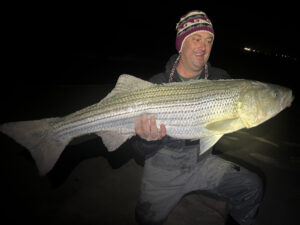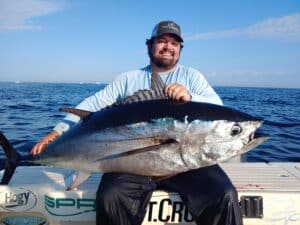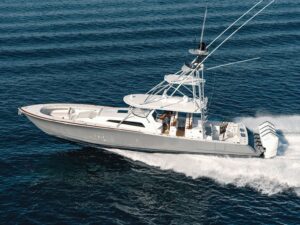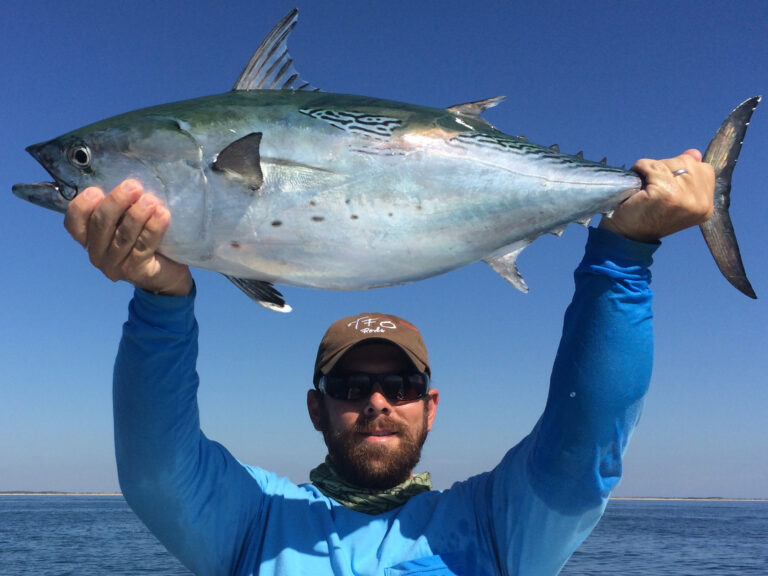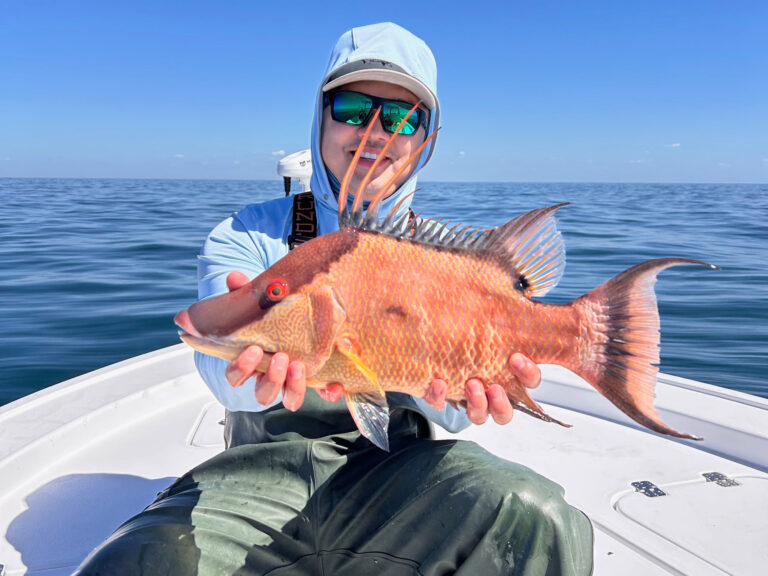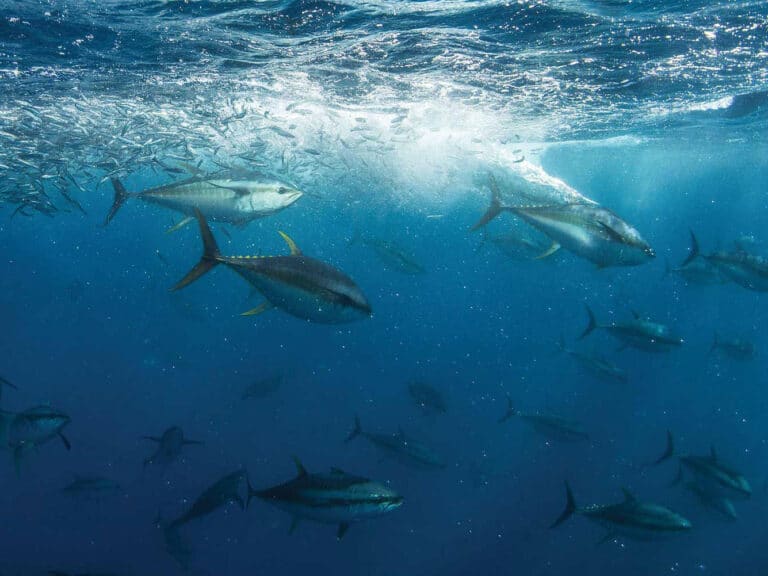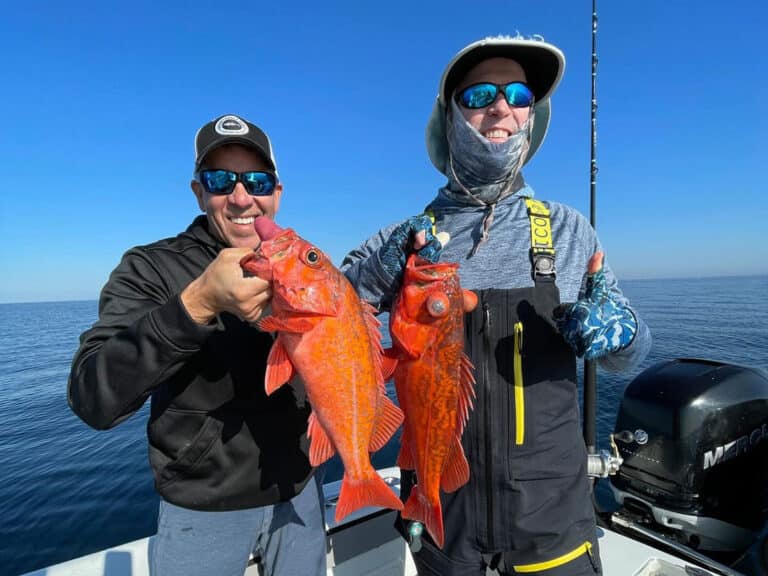
Our panga wallowed in a hefty Pacific swell just a few hundred yards off a rocky peninsula while the skipper used the engine to hold us in a position. The trick was to be safe yet close enough so that we could cast our lures into the sweet spot behind the heaving mass of green water. Balancing precariously on the raised foredeck, one angler launched a popper, an industrial-size lure subscribing a graceful arc. The second it splashed down behind the breaking crest of a swell, he snapped the spinner’s bail shut, and with stiff popping action, began plunging the cup-faced lure over the wave.
Moments later, the surface to the right of the popper boiled as a rusty brown shape suddenly appeared and inhaled the lure. The line came taut, the rod bent and — despite a nearly-locked-down drag — a cubera snapper of trophy proportions effortlessly ripped out yards of line on its first blistering run directly toward the reef.
As the angler reared back against the fish, a resounding crack reverberated around the boat. The rod had snapped about 12 inches from the tip, the line breaking in the process. Hero to zero in a fraction of a second. In disgust, the fellow threw his broken rod to the deck, loudly chastising its manufacturer for a poorly built product.
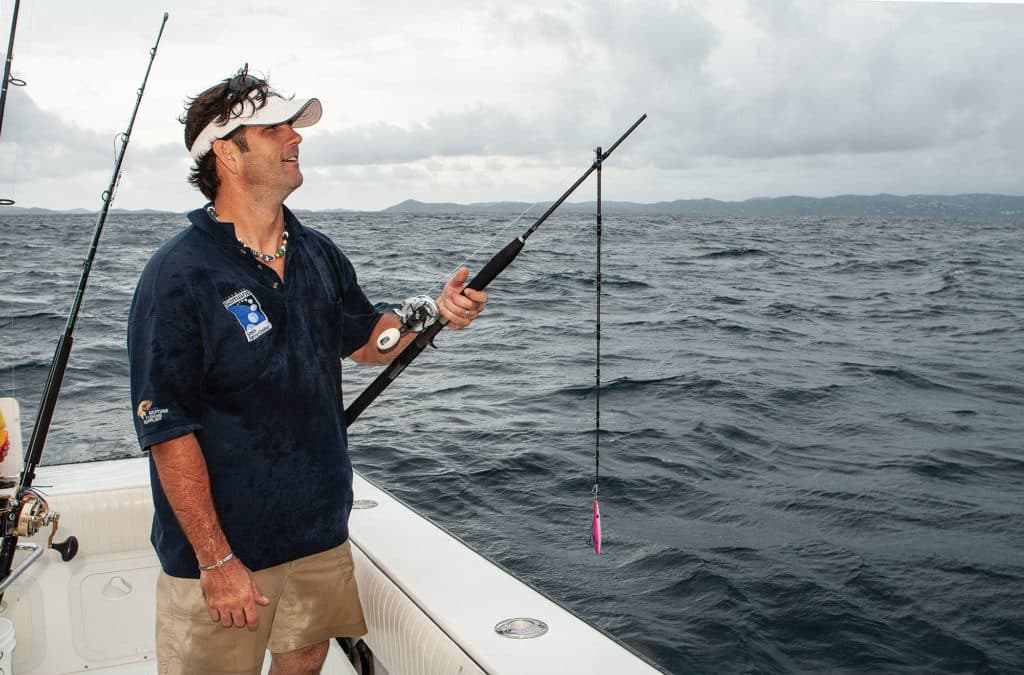
I’ve witnessed similar scenarios at numerous destinations around the world, noting that anglers often apportion blame on the manufacturer. Most often, though, I’ve been convinced that this has not been the case. But of course, suggesting that the fault might lie with the angler — who just lost a good fish, even perhaps the catch of a lifetime, and broke an expensive rod in the process — is not a good idea.
Admittedly, on a few rare occasions, I’ve felt that rod breakage probably resulted from some manufacturing defect. For example, many years ago during a trip I hosted to Norway, five anglers had each purchased identical four-piece travel rods specifically for the trip. Yet within a few short hours of fishing on the first morning, four of those rods had snapped. Each had failed in the exact same place, leaving little doubt that the rods were at fault.
Like most anglers, I have my own ideas and theories about how and why rods break when fighting fish, but rather than speculate, I sought the insight of leading industry insiders and experienced fishing guides on what causes rods to break under stress.
Three Reasons Fishing Rods Break
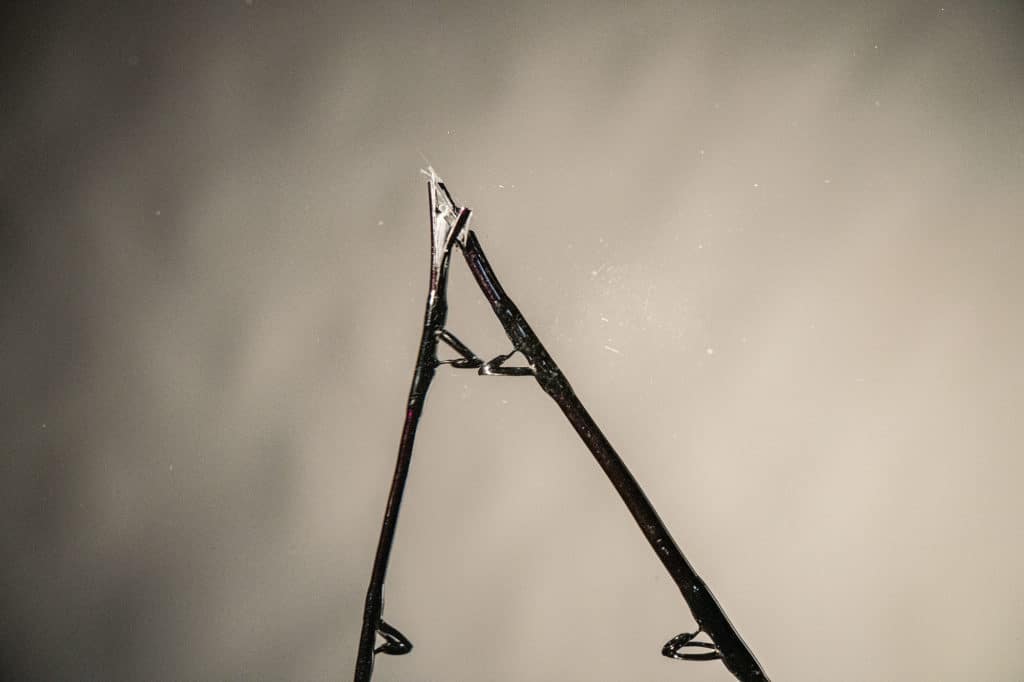
Trey Epich, a former product-planning manager with Shimano, cited the three causes of rods breaking in use:
- The rod has been somehow damaged in transit or handling (in a way that doesn’t show);
- High-sticking while fighting a fish;
- Mismatched tackle, as when an angler fishes too large a reel or with line too heavy for a given rod.
Epich elaborated: “When fighting fish with an appropriate tackle system that matches the intended species, an angler should never have to wonder, If I pull too hard, will my rod break?” Epich mentioned important points to consider when choosing tackle. “Make sure your reel’s drag setting, line weight and rod ratings are all in alignment. For example, you shouldn’t try to fish a large saltwater spinning reel at a full drag setting on a rod that is rated for up to 30-pound-test. Also, I see anglers who have loaded relatively small reels with very thin, very strong braided lines that are way above the maximum rating for their rod.”
Too often, even knowledgeable anglers, in the excitement of battle (especially toward the endgame), hold rods skyward, an action known as high-sticking. Perhaps more rods break at that point than in any other in-use situation. To avoid that, Epich said to keep your rod at an angle between 45 and 60 degrees when hooked up.

The biggest cause of rod breakage invariably is misuse or mishandling, according to Justin Poe, formerly of Shimano and Accurate Fishing, but currently director of rods at Pure Fishing. “Oftentimes rods are broken before they’re broken.”
As examples, he cited a rod hitting a ceiling fan, being dropped against an immovable object, or allowing a sinker or jig hooked in a rod keeper to bang against the blank during the long run to a fishing spot. “While none of these things might leave a rod broken in an obvious way, as soon as the fibers expand or contract at the damaged spot during a fight with a good fish, that rod snaps.”
Christopher Cathcart, engineering manger at Pure Fishing, explained that “you’ll typically see a manufacturing defect show up pretty quickly, either when casting or fighting a fish. If a rod has been used for several months of fishing and then suddenly breaks, typically that’s related to something other than a manufacturing defect.”
Understanding Fishing Rod Failures

How rod breaks appear, Epich said, can reveal the cause of a break. However, with rod materials, “we don’t see a lot of variance in breakages between materials other than a rod with heavier graphite contents will have a more sheared/shattered break, whereas one with heavier glass content will have a more splintered break.
“When we see rods that have broken into three or four pieces, that’s an indication that more force was applied to the rod than its maximum intended breaking strength. When we test our rods in a ‘hang down’ test for break strength, they almost always shatter into several pieces,” Epich continued. However, “when you see a rod break 12 to 18 inches from the tip, that’s a result of high-sticking.”
It’s pretty easy to identify why a blank has failed, Poe agreed. An impact hit will leave a small crater on the blank. Many rods are clear‑coated, which helps protect the blank from impact and UV exposure, but also helps impacts show up, as a hazy spot, likely to be close to the break. “I’ve never seen a rod break into two pieces in testing or on the water from the pull. When the rod is overloaded, it will break in three or more pieces, unless there has been an impact.”
Adding Strength to Fishing Rods
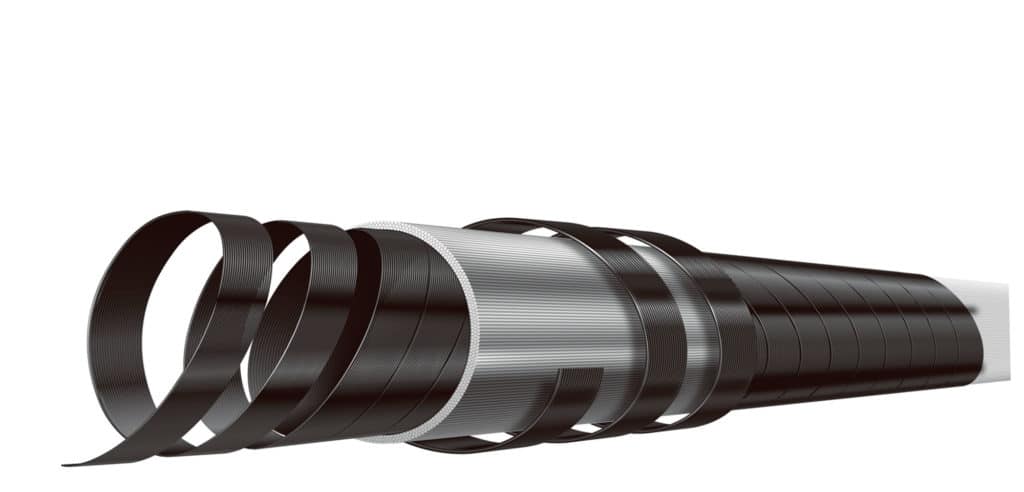
“Fiberglass rods are typically stronger than carbon (graphite) rods,” Cathcart said, but they don’t have the sensitivity or weight savings. Therefore, carbon rods give you some advantages over glass, but they require more care because they are more susceptible to damage and breakage due to the nature of the material. Advanced materials and resin systems help bridge this gap, and we use some of these today in our rods.”
In fact, most rod-makers add materials in the manufacturing process to strengthen blanks. For example, Shimano uses what it calls its Spiral-X and Hi Power-X technologies to prevent breaks that might be caused by previous impacts. “In addition,” Epich said, “both of these blank technologies add to the torsional rigidity of the blank and increase compression strength, which lead to less blank ‘ovalization’ and breakage.”
A strategy used by Accurate places a high-modulus carbon tape around the entire blank, forming an “X” pattern. This both strengthens the blank and makes it durable and impact resistant, Poe said.
The Multipiece Fishing Rod Factor

Multipiece travel rods bring up a separate set of precautions for anglers because “if the ferrule joints are not fitted together correctly, it would be like hoping for the best in your PVC sprinkler pipe when gluing it in at only half depth,” Poe said. “The ferrule is designed to envelop the joint, giving it all points of contact for stability. Often, if these don’t fit right, when the rod flexes, you’ll hear what we call ‘rod knock,’ which is the male end rattling around within the female end of the ferrule.”
Poe added: “This will eventually wear out the inside of the connection. As long as the ferrules fit well, a multi-piece rod is just as strong as a one-piece—some would even say stronger—provided the ferrules are located at the proper points. Some argue that ferrules create hard spots that hinder the action in multipiece rods, but I think the technology today is so good that most anglers would never know a rod was multipiece [from the action].”
Cathcart agreed that “multi-piece rods have a reputation for being weaker, but if designed properly, they can be very strong.” He cites modern multipiece fly rods and also some saltwater jigging rods that have detachable sections with the rod sliding into the top of the handle sections. “Rods like these see a lot of pressure, and they hold up just fine,” Cathcart said.
Jigging Rods Face Maximum Stress

A rod built strictly for optimal performance or sensitivity, where strength is secondary, might be more susceptible to breaking when mishandled, Poe maintained. But most rods are built with multiple layers that vary in number, thickness, orientation and material, Cathcart said, to improve performance while making them stronger.
Jigging rods in particular seem to be routinely subjected to maximum stress. Cathcart said that “these rods see a lot of stress both when working the lures and also when fighting fish. You need a rod limber enough to properly work a lure, but strong enough to land a fish. For this reason, the design of the rod is very important.
“You’ll see many modern jigging rods with a slower action in the rod blank; this allows the rod to flex more toward the middle and back end when under a load, which helps spread out the load along a longer portion of the blank. It also makes working lures a little easier.”
A Fishing Guide’s Perspective on Rod Strength

Capt. Skip Nielsen started his guiding career way back in 1973, and you can still find in him on the waters in and around Islamorada, Florida. Nielsen’s clients routinely caught 100-plus-pound tarpon along with huge sharks and grouper. So how do today’s rods compare with those used when he started fishing?
“Back in the day, the good-quality one-piece fiberglass rods were pretty hard to break. When graphite rods came out, they broke fairly easily. I was always on a quest for a stick that would not break trying to pump up a large grouper with 50-pound line,” Nielsen says. “Rods tended to break when anglers were fighting fish straight up and down: It’s all about the angle.”
Capt. Rick Stanczyk, of Bud N’ Mary’s Marina, said: “Today’s rods are incredible, but there are still do’s and don’ts. The biggest cause of rods snapping, in my experience, is due to angler error.” Not surprisingly, Stanczyk then cites high-sticking because that “puts the pressure in the tip part of the rod as opposed to the backbone; this causes the more-fragile tip to snap.”
And, Stanczyk points out—as industry insiders noted above—anglers can easily load reel-and-rod combos with thin braid much stronger than is intended for the rod. And the temptation to do so is clear: That line fits on the spool well enough and casts easily on the lighter rod. However, this situation can be tough on rods.

